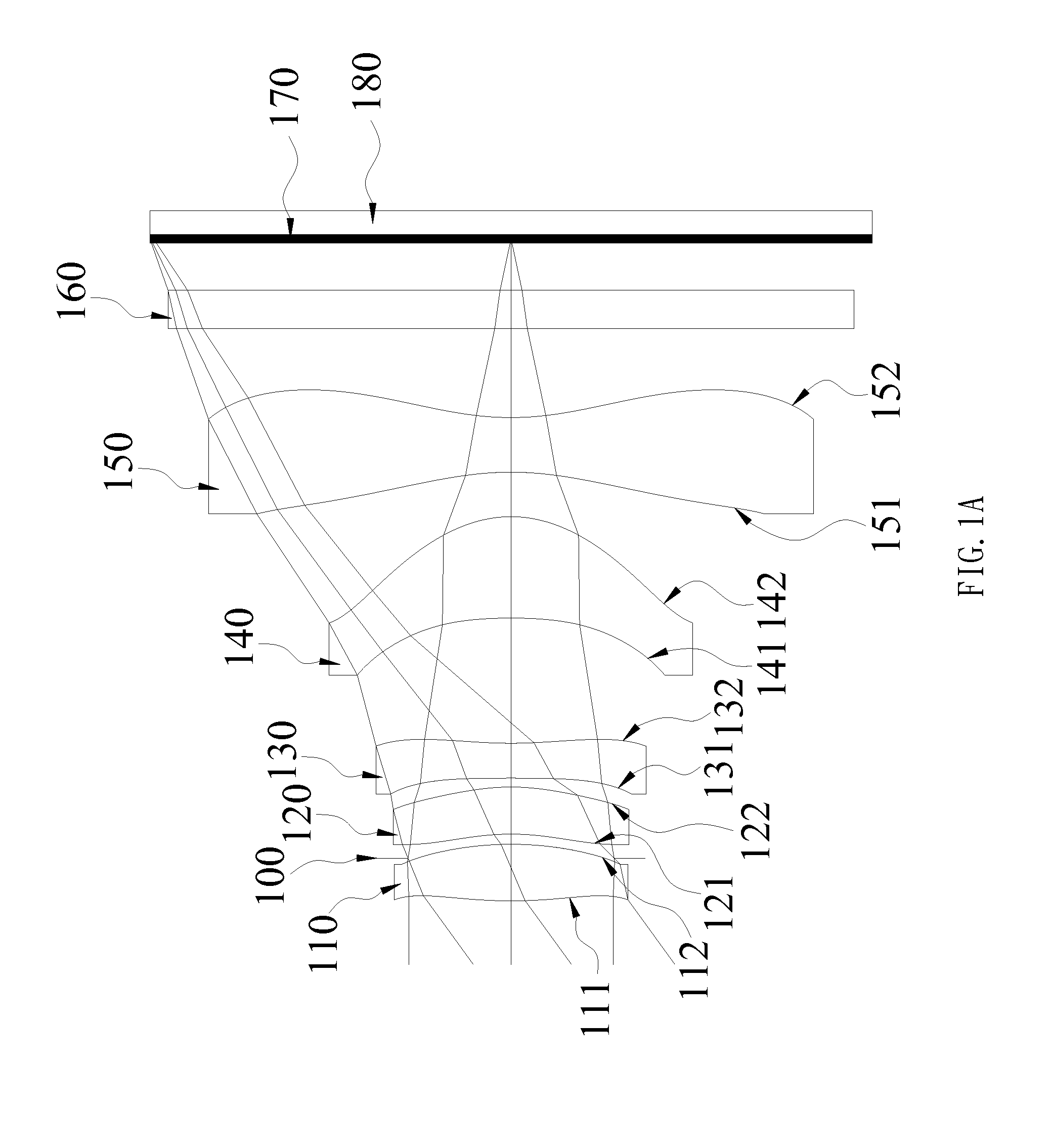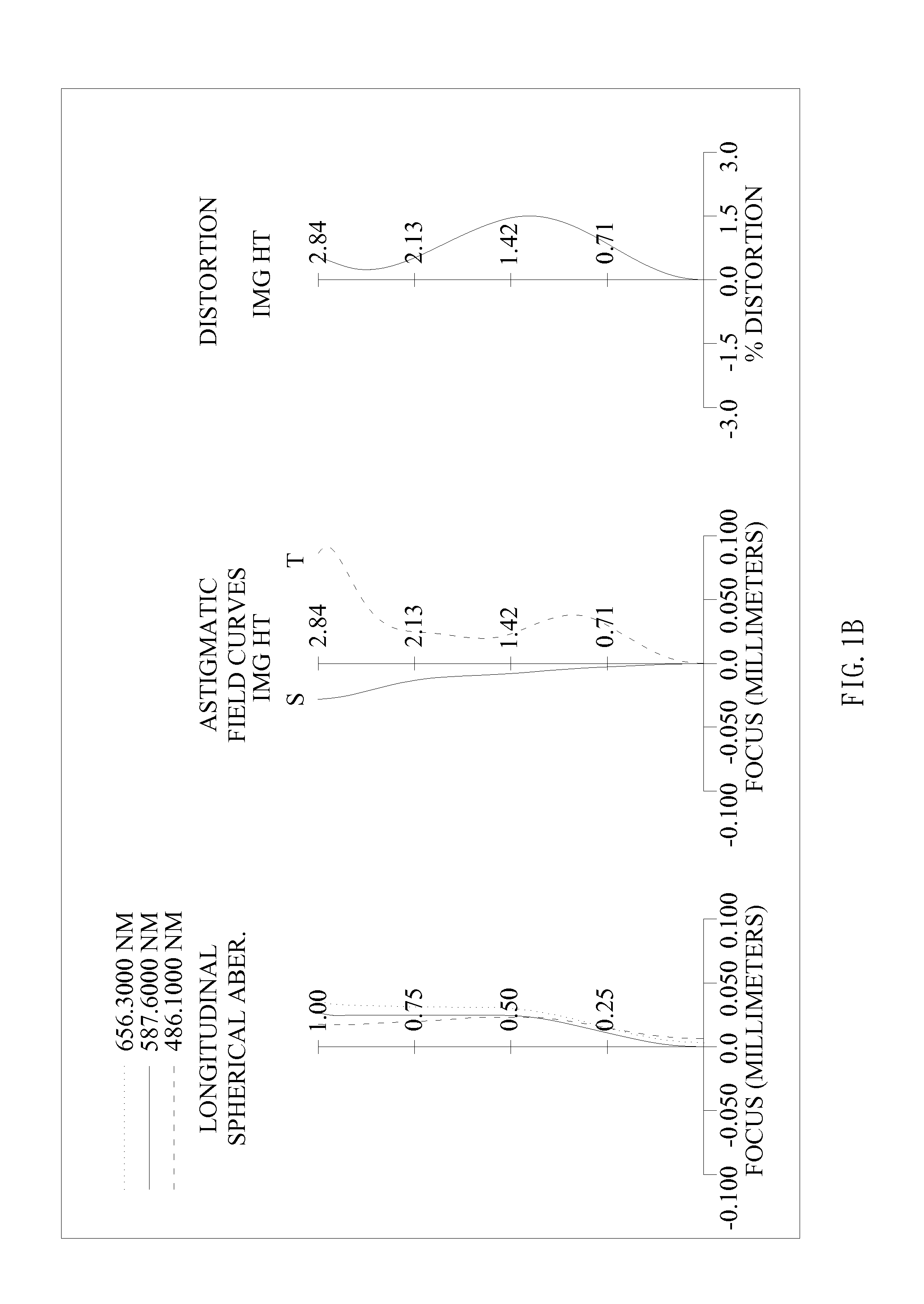Imagery Optical System
- Summary
- Abstract
- Description
- Claims
- Application Information
AI Technical Summary
Benefits of technology
Problems solved by technology
Method used
Image
Examples
first preferred embodiment
[0094]With reference to FIGS. 1A and 1B for a schematic view of an imagery optical system and a series of aberration curves in accordance with the first preferred embodiment of the present invention respectively, the imagery optical system comprises five lens elements, an infrared filter (160), an aperture stop (100) and an image sensor (180), and the five lens elements sequentially arranged from an object side to an image side along an optical axis include: a bi-convex first lens element (110) with positive refractive power and made of plastic, and both object-side surface (111) and image-side surface (112) are aspheric; the second lens element (120) with positive refractive power, made of plastic, and having a concave object-side surface (121) and a convex image-side surface (122) proximate to the optical axis, and both object-side surface (121) and image-side surface (122) are aspheric; the third lens element (130) with negative refractive power, made of plastic, and having a con...
second preferred embodiment
[0101]With reference to FIGS. 2A and 2B for a schematic view of an imagery optical system and a series of aberration curves in accordance with the second preferred embodiment of the present invention respectively, the imagery optical system comprises five lens elements, an infrared filter (260), an aperture stop (200) and an image sensor (280), and the five lens elements sequentially arranged from an object side to an image side along an optical axis include: a bi-convex first lens element (210) with positive refractive power and made of plastic, and both object-side surface (211) and image-side surface (212) are aspheric; the second lens element (220) with positive refractive power, made of plastic, and having a concave object-side surface (221) and a convex image-side surface (222) proximate to the optical axis, and both object-side surface (221) and image-side surface (222) are aspheric; the third lens element (230) with negative refractive power, made of plastic, and having a co...
third preferred embodiment
[0108]With reference to FIGS. 3A and 3B for a schematic view of an imagery optical system and a series of aberration curves in accordance with the third preferred embodiment of the present invention respectively, the imagery optical system comprises five lens elements, an infrared filter (360), an aperture stop (300) and an image sensor (380), and the five lens elements sequentially arranged from an object side to an image side along an optical axis include: a bi-convex first lens element (310) with positive refractive power and made of plastic, and both object-side surface (311) and image-side surface (312) are aspheric; the second lens element (320) with positive refractive power, made of plastic, and having a concave object-side surface (321) and a convex image-side surface (322) proximate to the optical axis, and both object-side surface (321) and image-side surface (322) are aspheric; the third lens element (330) with negative refractive power, made of plastic, and having a con...
PUM
 Login to View More
Login to View More Abstract
Description
Claims
Application Information
 Login to View More
Login to View More - R&D
- Intellectual Property
- Life Sciences
- Materials
- Tech Scout
- Unparalleled Data Quality
- Higher Quality Content
- 60% Fewer Hallucinations
Browse by: Latest US Patents, China's latest patents, Technical Efficacy Thesaurus, Application Domain, Technology Topic, Popular Technical Reports.
© 2025 PatSnap. All rights reserved.Legal|Privacy policy|Modern Slavery Act Transparency Statement|Sitemap|About US| Contact US: help@patsnap.com



